Description
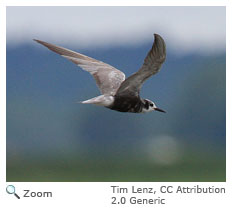 A small, dark bird between 9 and 10 inches, the black tern glides through the air on its long wings. It has a very sharp and slender bill which it uses to grab insects out of the water. The black tern has different coloring depending on the season. During summer breeding season, the black tern's head, chest and wings are dark gray. In the winter, its head and underside are white while the wings remain gray. A small, dark bird between 9 and 10 inches, the black tern glides through the air on its long wings. It has a very sharp and slender bill which it uses to grab insects out of the water. The black tern has different coloring depending on the season. During summer breeding season, the black tern's head, chest and wings are dark gray. In the winter, its head and underside are white while the wings remain gray.
Range
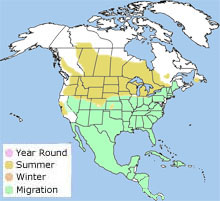 In the summer, the black tern is found across Canada and the northern United States. It moves throughout the United States and Central America during migration, eventually landing on the northern coast of South America for the winter. In the summer, the black tern is found across Canada and the northern United States. It moves throughout the United States and Central America during migration, eventually landing on the northern coast of South America for the winter.
Habitat
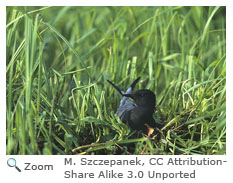 The black tern spends the summer inland. During this time, it lives in marshes with dense vegetation and pockets of shallow, open water. In the winter, the black tern migrates to the northern coast of South America. The black tern spends the summer inland. During this time, it lives in marshes with dense vegetation and pockets of shallow, open water. In the winter, the black tern migrates to the northern coast of South America. |
|
Diet
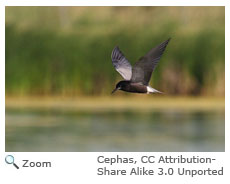 During breeding season, the black tern eats invertebrates such as dragonflies, damselflies, grubs and small mollusks. It also eats small freshwater fish. During the winter, small marine fish and plankton make up the black tern's diet. During breeding season, the black tern eats invertebrates such as dragonflies, damselflies, grubs and small mollusks. It also eats small freshwater fish. During the winter, small marine fish and plankton make up the black tern's diet.
Life Cycle
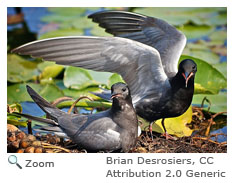 The male black tern performs an elaborate courtship ritual to attract females which includes flying into the air with a fish in its mouth. The black tern nests in small colonies in inland marshes. Nests are sometimes built on a muskrat house or on a mass of floating plants in shallow water. Females lay three eggs between May and early August. She incubates the eggs for 22 days. Young terns leave the nest early, first by swimming and then flying. Young terns can fly after about three weeks. The male black tern performs an elaborate courtship ritual to attract females which includes flying into the air with a fish in its mouth. The black tern nests in small colonies in inland marshes. Nests are sometimes built on a muskrat house or on a mass of floating plants in shallow water. Females lay three eggs between May and early August. She incubates the eggs for 22 days. Young terns leave the nest early, first by swimming and then flying. Young terns can fly after about three weeks.
Behavior
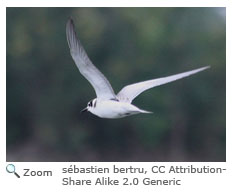 When feeding, the black tern hovers over the water with its beak pointed down. When ready, the bird makes a sudden drop or swoop to grab the insect in its bill. When feeding, the black tern hovers over the water with its beak pointed down. When ready, the bird makes a sudden drop or swoop to grab the insect in its bill. |